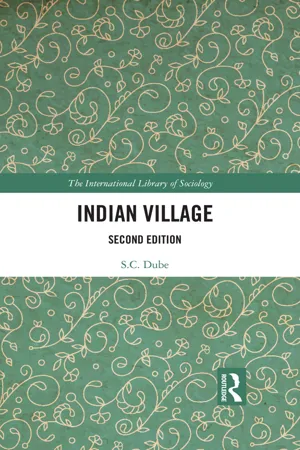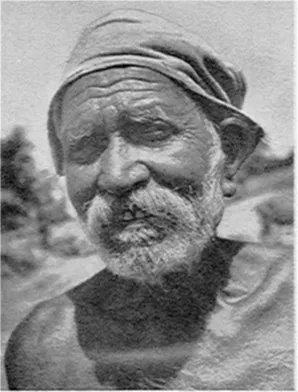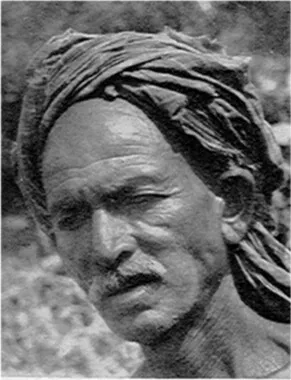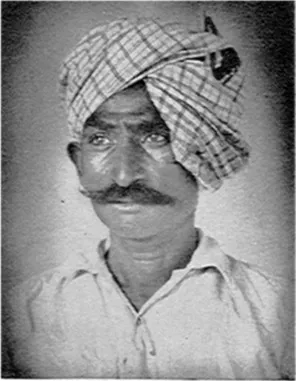1. The Setting
SHAMIRPET is a village situated at a distance of about twenty-five miles from the twin cities of Hyderabad and Secundrabad in the Deccan plateau of India. Culturally it lies in the region known as Telangana, which is itself a part of the wider culture-area of Andhra-desa. Telangana is a country of fertile fields and barren rocks; a land of temples, tanks and lakes. It is estimated that there are over twenty thousand lakes and tanks in this region, which covers an area of more than 42,000 square miles. Shamirpet is located by the side of one of these tanks and lies on the road that links the capital city of Hyderabad with Karimnagar, the headquarters of the northern district of that name.
The picturesque landscape of the village is truly characteristic of the Deccan plateau. The soil is in part black and in part red, and is suitable for the cultivation of rice, millet, castor and other oil-seeds, pulses and tobacco. An endless series of barren rocks formed of gneisses and granites dominates the land. Tall palmyra trees stand magnificently and imperiously against the often-clear sky, evergreen shrubs circle the rock formations and tamarind trees grow here and there near human habitation. In the countryside surrounding Shamirpet the average annual rainfall is about twenty-five inches. From Indian standards, the climate is moderate and knows no extremes either in winter or in summer. The days during the summer season are rather hot, the temperature often touching 112°F., but the evenings and nights are always cool and pleasant. In some winter nights the temperature drops to 45°F. There is little forest in the country immediately surrounding
2c. A Madiga Untouchable.
Shamirpet and the neighbouring cluster of villages. However, villagers are able to collect some fuel as well as small quantities of edible and marketable minor forest produce from the local scrub jungle. In this type of landscape little game is to be expected. Tigers from the forests fifteen or twenty miles away are occasionally seen, but panthers, in search of stray goats, calves and dogs, are more frequent visitors to the village. Wild pigs are plentiful and always do very considerable damage to the crops. Spotted deer make an occasional appearance in the surrounding areas, while hares which abound in the shrubs are very often shot or hunted with dogs trained for this purpose. Wild ducks come seasonally to the large tank near the village, and green pigeons and partridges are among the other feathered game found in the vicinity of Shamirpet.
It has been pointed out that Shamirpet is only some twenty-five miles from Hyderabad and Secundrabad, which rank fourth among the cities of India in respect of population and size. It is only fifteen miles from the Bolarum cantonment and twelve miles from the military aerodrome of Hakimpet. A regular bus service plying between Hyderabad and Karimnagar touches Shamirpet, and there are about twelve buses running in both directions on this road every day. From this it should not be assumed, however, that Shamirpet is just a suburban extension of Hyderabad. Although it is in regular and constant touch with the capital, it is an independent village with an organization of its own.
No village in India can be singled out as being typical of the country as a whole, but Shamirpet possesses most of the characteristics which are common to the rural communities in middle and peninsular India. As an independent socio-economic and ritual unit it enjoys partial self-sufficiency in several aspects of community life. In the wider organization of the rural community it possesses partial autonomy. Its component units are mostly the occupational castes which are integrated into the structure of the village. Finally, it has a semi-judicial village council composed of caste elders and other influential persons. This council administers justice in socio-religious cases involving breaches of the traditional norms of society. The village as a unit of social organization performs several significant functions which form an important agency of social control.
2. The People
According to the census of 1951, the total population of Shamirpet, which included the two neighbouring hamlets of Babuguda and Upparpalli, was 2,494, with a total of 508 houses. The following table shows the distribution of the population according to religion:
| 1. Hindus. | A. Clean castes | 1,434 |
| B. Untouchables or Scheduled castes | 680 |
| 2. Muslims | | 340 |
The predominant language in Shamirpet is Telugu, the main language of Telangana and Andhra-desa. It is known as ‘the Italian of the East’ and is praised for its sonorous and lyrical qualities and possesses a vast literature, both classical and modern. However, the dialect of Telugu, which is spoken in Shamirpet, and generally in the countryside, is criticized by the more sophisticated Andhras for its harshness and rustic accent. In the census of 1951, 2,008 persons in this village were recorded as speaking Telugu, while 340 persons were recorded as speaking Urdu, which was until 1948 the official language of Hyderabad administration. These figures are, however, misleading, and make reference only to the mother-tongue. In practice most men in the village are bilingual; those whose mother-tongue is Telugu have at least a smattering of Urdu, and of the 340 Urdu speakers at least half possess a working knowledge of Telugu. As a generalization it may be stated that knowledge of the mother-tongue alone is confined only to women, although several women among both the Hindus and the Muslims are also bi-lingual.
Thus the two major divisions in the population of the village may be distinguished on the grounds of religion and language. Culturally also the Hindus and Muslims stand in marked contrast to each other.
The Hindus of Shamirpet can be classed under three broad divisions:
- Cultivators.
- Occupational castes, with traditional crafts and professions regarded as clean and respectable.
- Depressed classes, subsisting by humble and lowly callings.
In the first group we can place the following castes: the Reddi, the Muttarasi, and their subdivisions. These groups are often referred to as ‘the Kapu’ or agricultural castes. As this name suggests, they derive the major part of their subsistence by tilling the land, although individuals from any of these groups may engage in trade and commerce or may take up urban occupations.
In the second group we can place the following: the Brahmin (priests), the Komti (traders), the Kummari (potters) and the Golla (shepherds). The five sections of the Panch Bramha group of artisan castes, that is, the Wadla (carpenters), the Kammari (blacksmiths), the Ausula (goldsmiths), the Kase (workers in bell-metal) and the Kanchari (sculptors), also belong to this group—although they claim separate identity and are rather exclusive. The Sale (weavers), the Gaondha (toddy-tappers), the Sakali (washermen) and the Mangali (barbers) also follow their traditional occupations; and although in the hierarchy of caste organization their place is a little inferior to the castes mentioned above, they belong to the second group for the purpose of our classification. The position of the once-tribal but now largely assimilated Vaddar (stone-breakers) and the Erkala (hunters and basket-makers) is slightly different, for although they are not untouchables their position among the clean castes is the lowest.
There are only two untouchable or depressed castes in Shamirpet, the Mala and the Madiga. Of these two, the Malas consider themselves superior to the Madigas, by whose touch they are polluted. However, it should be pointed out that the Indian constitution has abolished untouchability. The untouchable castes can draw water from the public wells and can without discrimination share the public utilities with the clean castes. Their children now freely attend the common village school. But social conservatism dies hard and legislation alone cannot overnight change the deep-rooted complexes of thought and behaviour which are the heritage of many generations of a caste-ridden social system. Caste still retains its endogamous character, and traditional rules prohibit inter-dining with persons of lower castes. Thus in these two spheres at least the untouchable castes have still to confine themselves to their narrow circles. While in the cities the clean castes are no longer sensitive to the touch of a person belonging to these castes, in the countryside an untouchable still cannot approach too close to clean-caste people lest they be polluted by a chance physical contact. Some progressive-minded untouchables resent this disability, but nevertheless they recognize the value of realizing their own limitations and continue to conform to the traditional norms of behaviour.
The people of Telangana and Andhra-desa belong to the great family of Dravidian-speaking people who developed a great civilization in the south and have materially contributed to the final make-up of Indian civilization as we know it to-day. Racially they represent a mixture of several elements. In physical types also the people of Shamirpet show great variation. Most of the Muslim inhabitants of Shamirpet are the descendants of local converts and do not therefore greatly differ in physical characteristics from the local Hindu inhabitants, but the few immigrants whose arrival dates from recent times present a marked contrast with their more delicate features and fairer skin colour.
In point of dress and ornament the Hindus and Muslims differ widely. Muslim men and boys wear loose trousers of thin white cloth called pyjama, and a vest or a shirt. Out of doors they put on the more conventional long coat buttoned up to the neck known as sherwani. They invariably wear a red fez cap or a black cap made of sheepskin. Muslim girls wear a tight pyjama and a long, loose tunic which often touches the knees. Round the shoulders and thrown round the back they wear a thin white or coloured scarf known as dupatta or odhni. On festive occasions these clothes are very colourful. Married Muslim women usually wear a blouse or bodice, and a sari—a wide piece of cloth, some five or six yards long, which is tied round the waist to form a skirt that nearly touches the ankles. It is tied in such a way that one end of the cloth is taken over the chest to one shoulder and then passed behind the neck to the other shoulder. Married Muslim women are obliged by the rules of their religion to observe purdah, i.e. veil themselves in the presence of all but their closest relations. Whenever they leave their houses they wear this veil known as burkha, a garment which falls from the crown of the head to the ground. The Hindu mode of dress is quite different, and varies greatly according to the financial status of the different families. Among the poorer classes, infants remain naked, but occasionally a few rags are tied round their waists; and in childhood they go about in these tattered rags. Boys wear a vest or shirt and a dhoti. Girls wear a skirt (lahanga) and a blouse. Among the poorer classes these clothes are almost always dirty, for within a few days of their purchase they lose their new look; and although they are periodically washed, soap or soda-ash is rarely used and consequently they appear to be stained and soiled. In families which are financially better placed, and among those who have received some degree of education or who have been influenced by urban friends and relations, the children’s clothing is markedly superior in quality and cleanliness. Boys wear shirts cut in modern style and dhotis or occasionally pyjama. Girls wear either a blouse and skirt or frocks bought ready-made from the city stores or made by the local tailor. Men wear a vest or shirt and a dhoti. Influential and well-to-do persons put on a coat when leaving their houses, particularly when going to the city. Women wear a sari and a bodice, the latter invariably embroidered. The favourite colours of the women in the countryside appear to be the deeper shades of red, yellow and green. The village shepherds have a distinctive dress. When they go out to graze their herds of goats and sheep they always have a locally made black blanket on their shoulders, even in the hottest season.
The people of Telangana, particularly the women, are extremely fond of ornaments. The commonest types are those made of metal which include ear-plugs and ear-rings, nose-pins and nose-rings, rings worn on the fingers and toes, bracelets, anklets, several types of light and heavy necklaces and belts worn round the waist. Among well-to-do people ear and nose ornaments as well as necklaces are generally made of gold; the rest of a woman’s ornaments are of silver. However, very few people can afford ornaments of a metal as expensive as gold, and most people have a few silver pieces, the rest of their ornaments being made of cheaper metals and alloys. In addition to the metal jewellery all Hindu women except widows wear a number of glass bangles on the wrists. The Muslim women’s choice of ornament differs from that of their Hindu neighbours, and such jewellery as they wear often comes from the shops in the city and is not made according to the designs of the local goldsmith.
3. The Village
Shamirpet cannot claim to be a village of any great age. No historical records relating to the actual founding of the village are available, but the elderly people have some information regarding its past history ‘as it was passed on to them by their forefathers’. The village of Shamirpet owes its present shape to the construction of the large and beautiful tank which lies some three furlongs north of the village site. Before the construction of this tank there was a tiny hamlet on the present site which consisted of a few households and was known as Shahpur. Some three hundred and fifty years ago Ibrahim Quli Qutub Shah, then ruler of Hyderabad, wishing to perpetuate his name, ordered the construction of a huge tank which, he expected, would be called after him. This tank is the hyphen linking the city of Hyderabad with Secundrabad. However, according to the legend, the people associated it with the name of the engineer Hussain Khan and called it ‘Hussain Sagar’. So the ruler decided on the building of a second tank, and chose the site of Shamirpet. But the Shamirpet tank was his second disappointment. On the completion of the tank, he is believed to have come to the site and asked the people, ‘Whose tank is this?’ The people unwittingly answered, ‘It is Shah Mir’s tank.’ The people’s tribute to the man whose brain had created the project did not satisfy the Qutubshahi ruler. He ordered a third tank to be constructed at a different site some thirty-five miles away, and it is this tank which now commemorates his name and is known as ‘Ibrahimpatan Sagar’. The second of these tanks, constructed near the hamlet known as Shaepur, changed the fortunes of that tiny settlement. The people who had worked on the construction of the tank settled permanently in the vicinity of the hamlet and were joined by more settlers attracted by the irrigation facilities provided by the tank, so that the village gradually grew to a considerable size. Because of its association with Shah Mir’s tank, the hamlet was given the new name of Shah Mir Pet, which became gradually corrupted into Shamirpet.
In the year 1798 H.E.H. the Nizam of Hyderabad (until 1948 the feudal ruler of Hyderabad) granted this village together with several others as jagir (feudal estate) to one of his nobles, the late Fakhrul Mulk Khan Khanan. On his death the estate was inherited by his son Nawab Nizam Yar Jung, also known as Nawab Ehsan-ul-Mulk Khan Khanan. The last in the line of the Jagirdars of Shamirpet was Kemal Yar Jung. He constructed a beautiful summer house, which is now in ruins, adjoining the tank, as well as several office buildings in the village whic...




